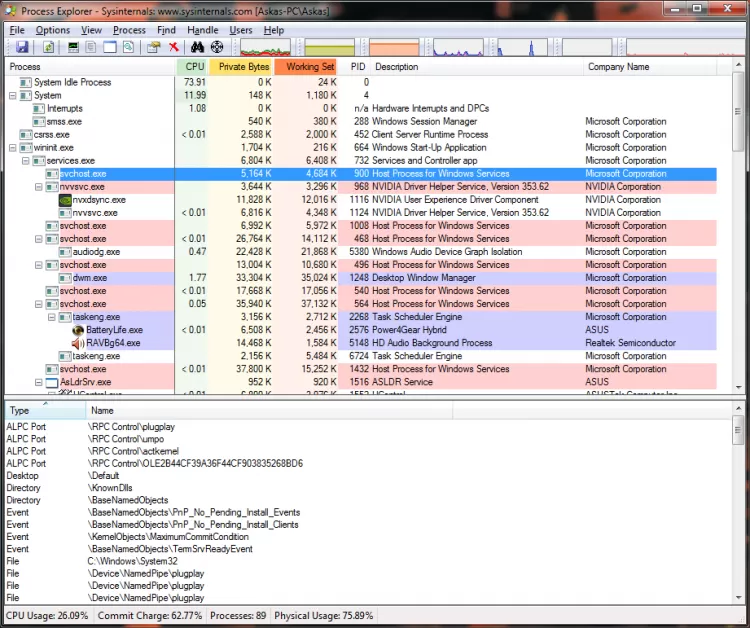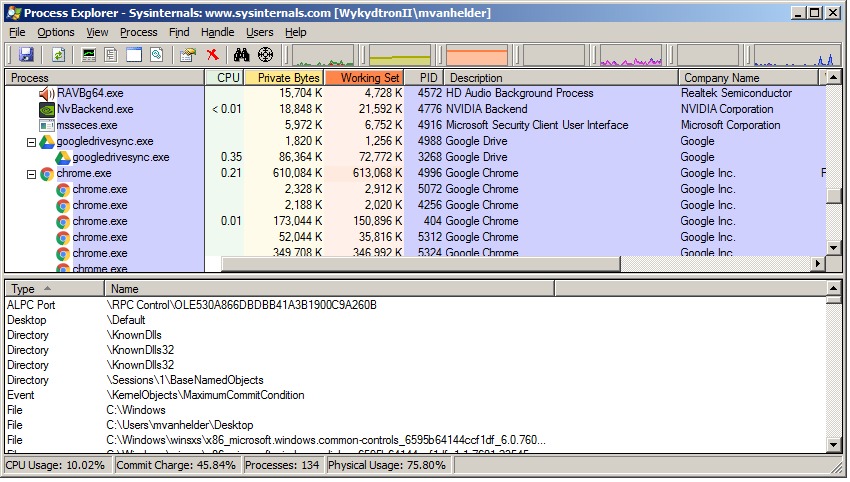

- HOW TO RUN PROCESS EXPLORER FULL
- HOW TO RUN PROCESS EXPLORER SOFTWARE
- HOW TO RUN PROCESS EXPLORER CODE
- HOW TO RUN PROCESS EXPLORER LICENSE
- HOW TO RUN PROCESS EXPLORER WINDOWS

This mode is turned off as soon as you click any mouse button or press any key. In this mode, a tooltip appear over each window with the PID and CLR version, and the process is highlighted in the Process Explorer tree. Hide When Minimized: check this item in the Options menu to have Process Explorer run in the tray as a small graph reflecting current CPU usage when you.
HOW TO RUN PROCESS EXPLORER WINDOWS
Native modules are shown in grey and cannot be added to the Assembly Explorer.Īfter clicking this button, you can hover the mouse pointer over windows of your desktop and identify the related processes. If this mode is on, both managed assemblies and native modules are shown in the tree. Native processes are shown in grey and cannot be added to the Assembly Explorer.Ĭontrols whether the Process Explorer shows native modules.īy default the Process Explorer only shows managed assemblies. Next time you launch Task manager from anywhere in Windows, it will launch. If this mode is on, both managed and native processes are shown. Click on the Options menu in process explorer, and select replace task manager.
HOW TO RUN PROCESS EXPLORER FULL
This mode is available on Windows Vista or later and requires administrative privileges to work on the full scale.Ĭontrols whether the Process Explorer shows native Windows processes.īy default the Process Explorer only shows managed processes. If this mode is on, managed assemblies of each process are grouped by their CLR versions and application domains, and native modules (if the Show Native Modules mode is on) are shown under a separate Native Modules node. If this mode is off, managed and native modules are shown in a flat list under their parent process nodes.

If this mode is on, child processes are shown inside their parent processes under the Child processes node.Ĭontrols whether the process tree reflects CLR hierarchies. If this mode is off, all processes are displayed in a flat list. NET assemblies loaded from disk files are added, dynamic assemblies and native modules are ignored.Ĭontrols whether the process tree reflects the parent-child relationship between processes. If you select a process, all assemblies that belong to the process will be added to the Assembly Explorer.
HOW TO RUN PROCESS EXPLORER SOFTWARE
The entire risk arising out of use or performance of the software remains with you.Adds the assemblies selected in the Process Explorer tree to the Assembly Explorer window. Software and any related documentation are provided on an as is basis, without warranty of any kind.
HOW TO RUN PROCESS EXPLORER LICENSE
This software is distributed on the terms of the GNU General Public License Version 3 or (optionally) any later version. In order to compile the program from source, you will need a shareware Toolbar 2000 component library by Jordan Russel.Process Explorer uses ToolHelp API functions, which allows it to run under Windows 95/98/ME/2000/XP, but not NT 4.
HOW TO RUN PROCESS EXPLORER CODE
You can use its code as an example of using ToolHelp API functions. I ported the code onto Delphi (compiles in Delphi 6 and 7). Process Explorer is based on the idea and code from a book by Jeffrey Richter called “Advanced Windows”.After the list of dlls running under Outlook.exe are listed in the bottom pane, select Save As on the File menu. In the Process Explorer top pane, scroll down the list of the files and then select Outlook.exe. Press CTRL+D or select View > Lower Pane View > DLLs to enable DLL view mode. So, for example, the picture above shows that WinAmp, a very popular media player, violates this rule big time. On the View menu, make sure Show Lower Pane is checked. Process Explorer helps one to avoid such situations.Single-clicking on Process Explorer's tray icon restores the window and brings it to the foreground, regardless of whether its minimized in the tray or not. popular media player, violates this rule big time. If you want Process Explorer to start in the tray then specify the /t option as its command-line argument. Which, in turn, slows down application startup and wastes physical memory. It is important to assign a libary a unique base address, because operating system will relocate a library if it is not possible to load it at its preferred address.For each loaded library the application displays the preferred base address (the address the library was built with) and the real base address (the one the library was loaded at). When you select a process, the right pane shows detailed process information and a list of libraries loaded by it. The main window of the application displays a list of all processes that have been loaded.


 0 kommentar(er)
0 kommentar(er)
